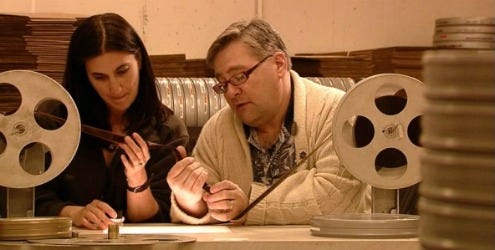These Amazing Shadows

For info and showtimes, click here.
A movie that's a paean to other movies might seem like 88 minutes of navel-gazing. This film directed by Paul Mariano and Kurt Norton does occasionally wallow in feel-good nostalgia, but it's still a well-made and insightful overview of the history of cinema.
The documentary is built around the National Film Registry, which has, since 1989, selected 25 American films every year deemed to be culturally, historically and artistically significant and worthy of preservation.
As one of the film's dozens of talking heads puts it, National Registry selection is in some ways a bigger honor than winning a Best Picture Oscar because no movie can be selected until at least 10 years after its release. That means the panel of experts has the benefit of hindsight to see how a film stacks up over the passage of time. Personally, I would've set the limit at 20 years.
But that's how films like Stanley Kubrick's "2001: A Space Odyssey" can be an early selection for the Film Registry list despite not even being nominated for an Academy Award for Best Picture.
The documentary talks to members of the panel in charge of selecting each year's new additions; I was pleasantly surprised to see my old New York University cinema studies professor, Antonia Lant. I remember an evening spent with a group of students in her apartment, helping do the dishes while we yammered on about movies.
There are also famous filmmakers and critics like Rob Reiner and Leonard Maltin, as well as the lesser-known souls in charge of preserving and restoring the many damaged film prints. Some astonishing factoids jump out at you during the movie, such as that half of all the films made before 1950 have been irrevocably lost and possibly as much as 80 percent of every silent film ever made. Astonishing.
"These Amazing Shadows" does occasionally fall into self-indulgence. The tendency to linger on certain movies while some interviewee goes on and one about how it changed their life tends to get old rather quickly. And sections about the way women and minorities have been portrayed in movies have an obligatory feel.
Still, there is much to be learned that I didn't know. The National Film Registry also includes non-famous movies including documentaries, independent and experimental films — even bits of propaganda, advertisements and home movies. Somehow it feels right that "Let's All Go to the Lobby" is on the Registry, with its unforgettable entreaty for theater patrons to go grab some Raisinets and popcorn.
Another amazing discovery was the film "Topaz," a series of footage shot by a Japanese-American interned during World War II. Its startling colors and images of smiling people stands in grim contrast to a sad chapter on our collective history.
Yet another thing I learned was about the career of Lois Weber, one of Hollywood's greatest directors during the silent era, whose work and reputation have faded with the years.
Although it sometimes feels a little bit like Hollywood patting itself on the back, "These Amazing Shadows" is a worthy look back at the most modern of art forms.
3.5 Yaps



